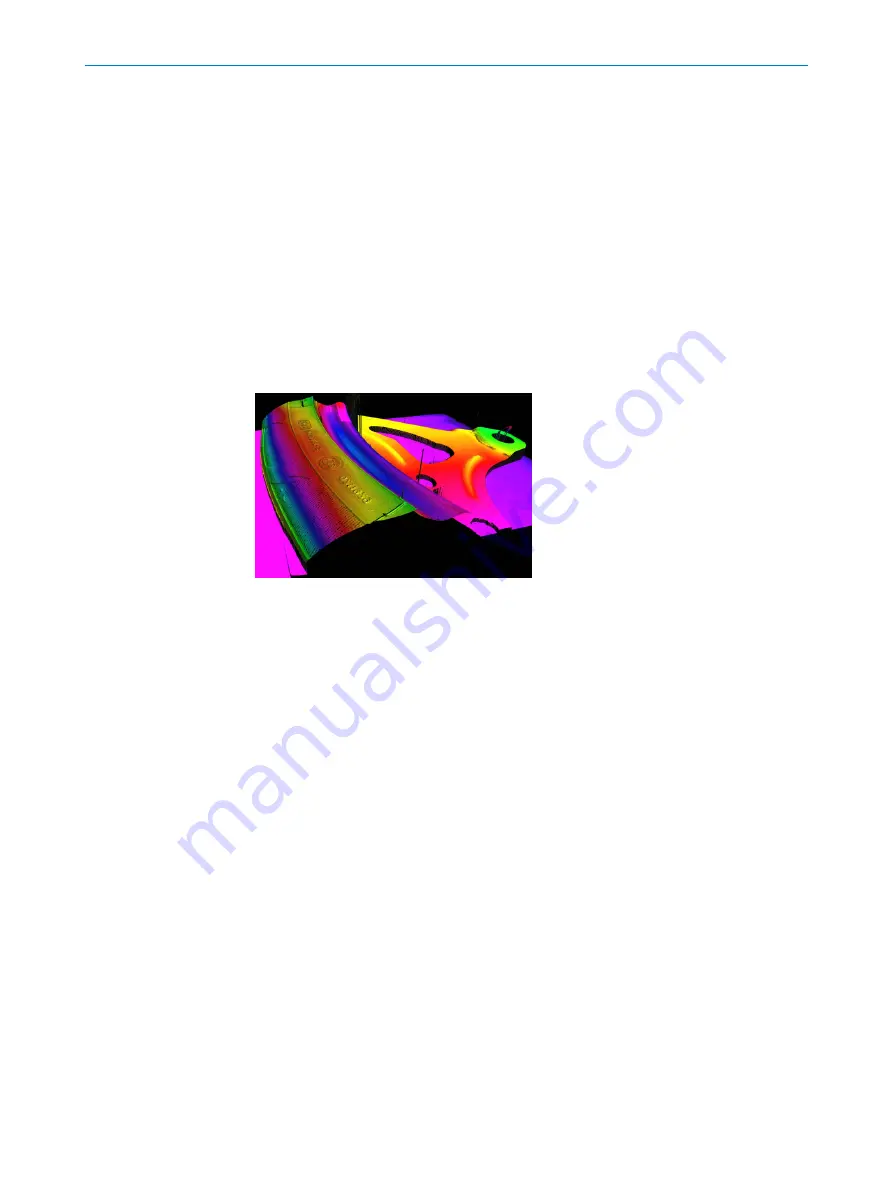
4
Product description
4.1
Introduction
Ruler3000 is a high-speed 3D camera with integrated laser, intended to be the vision
component in a machine vision system. Ruler3000 makes measurements on the
objects that pass in front of the camera and sends the measurement results to a
PC for further processing. The measurements can be started and stopped from the PC,
and triggered by encoders and photoelectric switches in the system.
The main function of Ruler3000 is to measure the 3D shape of objects by the use of
laser line triangulation. This can be used for example for generating 3D images of the
object, for size rejection or volume measurement, or for finding shape defects. Since
the optics in the camera is mounted at a fixed distance and angle from the laser, the
position of each point of the cross-section can be calculated by detecting the laser line
in the image. In the image below, the colors represent height.
Figure 7: Example of 3D image
The 3D image which is the result of a measurement is a calibrated 3D point cloud,
representing the visible surface of the object. For each point in the point cloud, you
can retrieve its position (x, y, z) in millimeters, in a coordinate system relative to the
Ruler3000, and the reflectance, i.e. the amount of light that is reflected by the object.
3D image data can also be retrieved as rectified maps with z values with a fixed x
and y sample distance. Rectified height maps reduce the bandwidth and make image
processing easier, but they might contain fewer details than the corresponding point
clouds.
4.2
Measuring with a 3D camera
The Ruler3000 measures the shape of objects using laser triangulation. It analyzes
images of the object as it passes under a laser line. Each image shows the laser line
as a cross-section of the object viewed from an angle. The result of a measurement is a
profile. The profile contains one value for each measured point along the cross-section,
for example the height of the object along its width.
For the camera to measure an entire object, the object (or the camera) must move
so that the camera can make a series of measurements along the object. The result
of such a measurement is a collection of profiles, where each profile contains the
measurement of a cross-section at a certain location along the transportation direction.
4
PRODUCT DESCRIPTION
16
O P E R A T I N G I N S T R U C T I O N S | Ruler3000
8026049//2021-04 | SICK
Subject to change without notice
















































